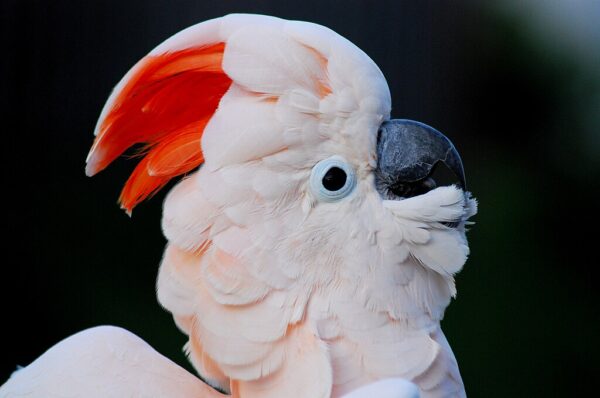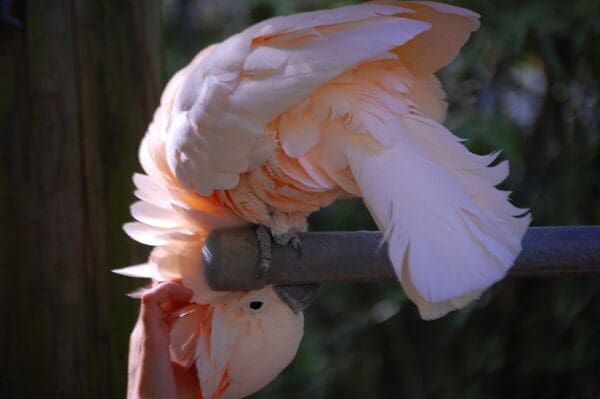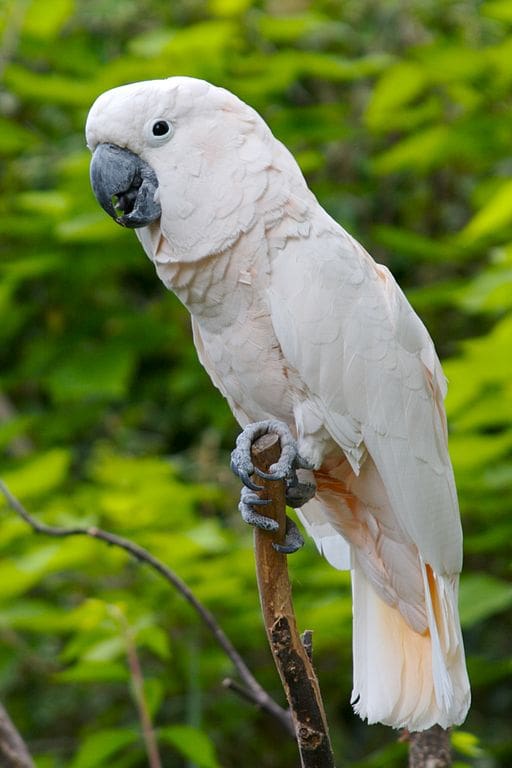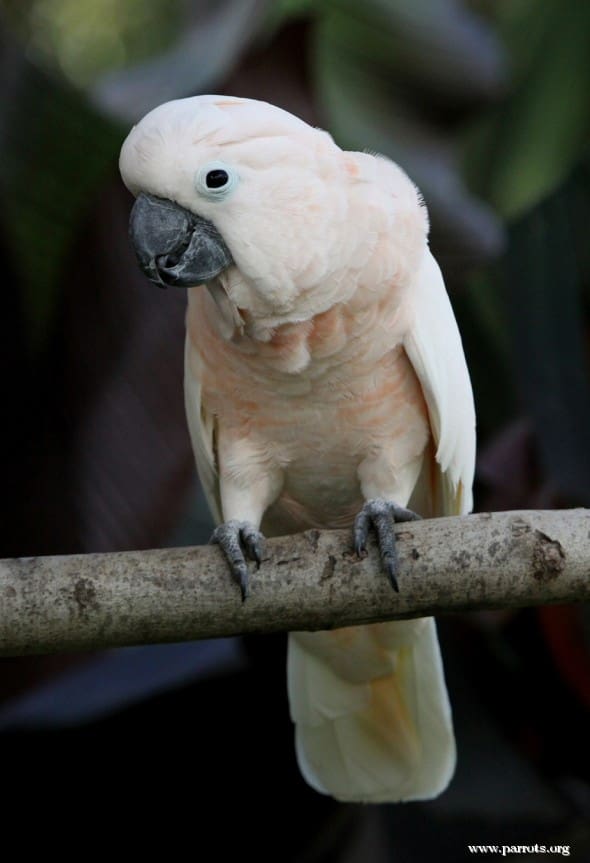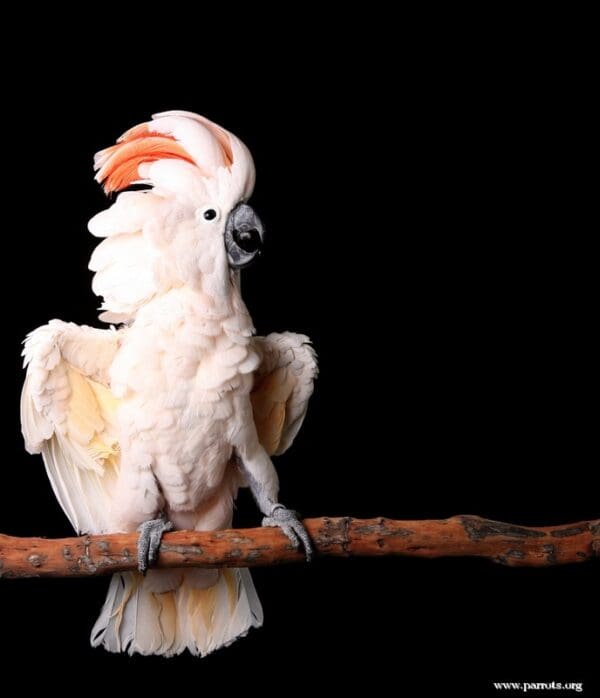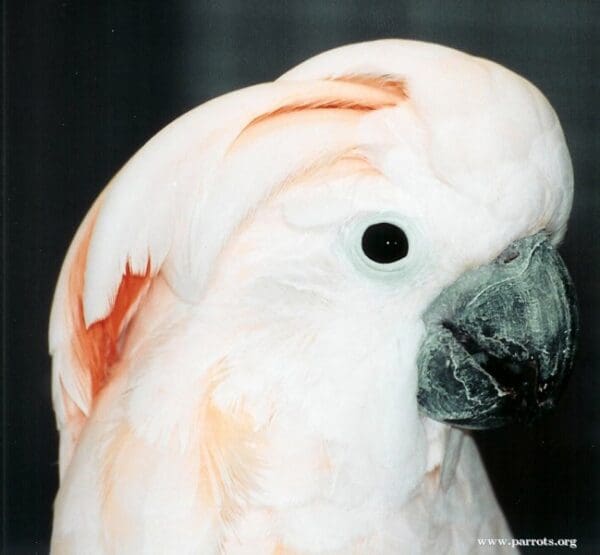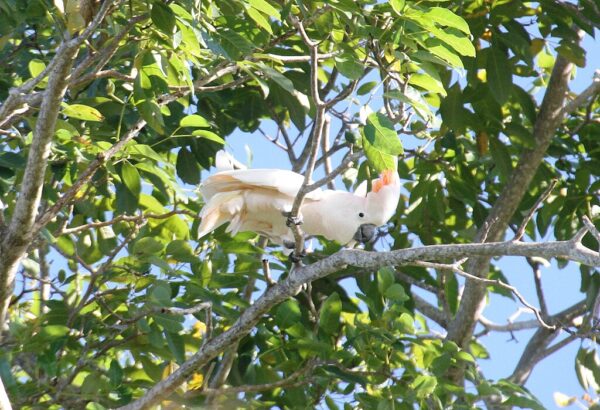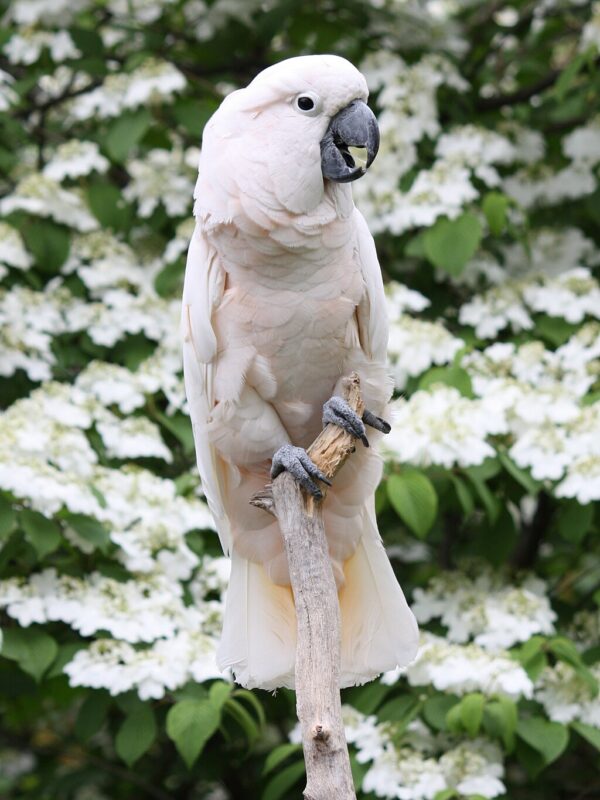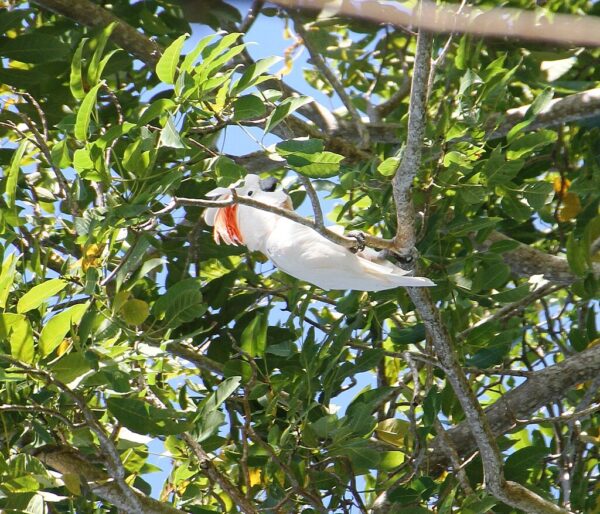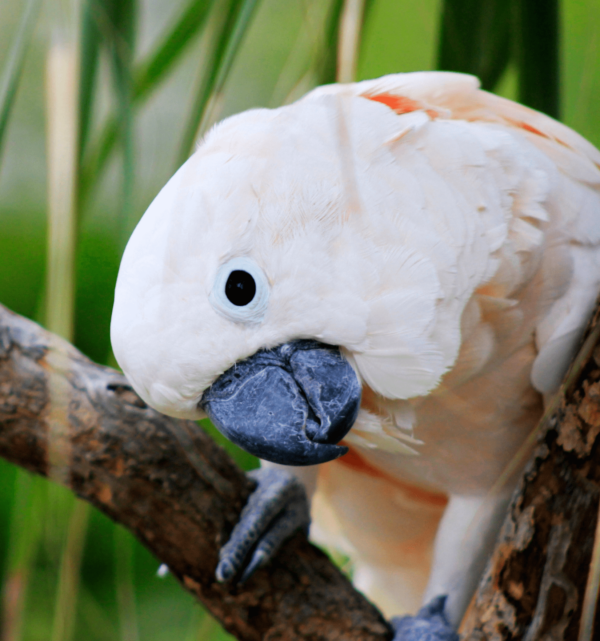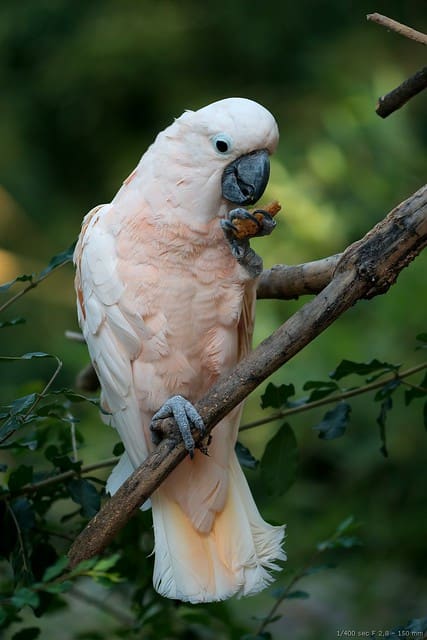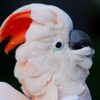
![© David (originally posted to Flickr as Bird and Hand) [CC BY 2.0] via Wikimedia Commons A companion Moluccan Cockatoo enjoys being preened](https://parrots.org/wp-content/uploads/2023/01/wpt_Moluccan-Cockatoo_1081-11-100x100.jpg)
![© John Moose [CC BY 2.0] via Wikimedia Commons A male Moluccan Cockatoo, Cincinnati Zoo, USA](https://parrots.org/wp-content/uploads/2023/01/wpt_Moluccan-Cockatoo_1081-10-100x100.jpg)
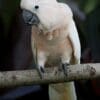
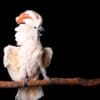
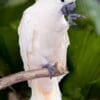
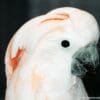
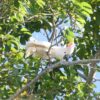
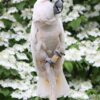
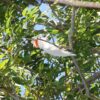
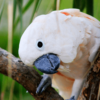
![© Dino Quinzani [CC BY-SA 2.0] via Flickr A Moluccan Cockatoo balances on one foot](https://parrots.org/wp-content/uploads/2023/01/wpt_Moluccan-Cockatoo_1081-14-100x100.jpg)
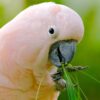
DID YOU KNOW?
The Salmon-crested or Moluccan Cockatoo is found only on Seram and Ambon in Indonesia.

Cacatua

moluccensis
Size:
40-50 cm (15.6-19.5 in)
Weight:
775-935 g (27.1-32.7 oz)
Subspecies including nominate:
one
Colour Adult:
Both adults large, soft peach-coloured cockatoo with bright, dark peach crest; soft yellow suffusion underwings and undertail. Eye black, area around eye white. Eye black in male and dark brown in female. Beak grey-black.
Colour Juvenile:
As in adult.
Call:
Shrill screech with quavering notes; are vocal most of all in evening.
Content Sources:
CITES
Avibase
BirdLife International
Cornell Lab of Ornithology/Birds of the World
A Guide to Parrots of the World, Juniper and Parr, 1998
Parrots: Status Survey and Conservation Plan 2000-2004, Snyder, McGowan, Gilardi and Grajal, 2000.
Parrots of the World, Forshaw and Cooper, 1989.
Parrots of the World, Forshaw, 2006.
Parrots in Aviculture, Low, 1992.
Avian Pediatric Seminar Proceedings, various authors, 1988.
Captive Status:
Fairly common
Longevity:
40-60 yrs
Housing:
Walk-in aviary, minimum length 4.5 m (14.7 ft).
Diet:
Small seed mix such as: canary, oats, safflower and small amount of hemp, spray millet, limited sunflower seed, dry, soaked or sprouted; sprouted beans such as mung or peas, cooked butterbeans or lentils, boiled or fresh corn, green leaves of spinach, Swiss chard, lettuce, sowthistle, dandelion and chickweed; fresh vegetables such as carrot, celery, zucchini, squash, green beans and peas in a pod; fresh fruit such as apple, pear, orange, banana, cactus fruits, pomegranates, berries, asian pears, kiwi fruit, and others; nutritionally complete kibble, high protein biscuits for underweight birds.
Enrichment:
Chewable objects – sterilized pine cones, fir, pine, willow or elder branches, vegetable tanned leather items; hard plastic puzzle items, food finders, push and pull toys, different size perches, socialization. Enjoys bathing so provide overhead misters or use spray bottle.
Nest Box Size:
75 cm (29″) high, 60 cm (23.4″) in diameter, barrel shaped.
Clutch Size:
2
Fledging Age:
15 weeks
Hatch Weight:
—
Peak Weight:
—
Weaning Weight:
—
World Population:
20,000-62,000 mature individuals, rapidly decreasing.
IUCN Red List Status:
Endangered
CITES Listing:
Appendix I
Threat Summary:
Wild bird trade (baseline estimates suggest 4,000 birds are removed from the wild annually in domestic trade), deforestation and habitat loss. By the 1980s the species was being extensively and unsustainably trapped for the cage-bird market, with an estimated 74,509 individuals exported from Indonesia between 1981 and 1990, and international imports averaging 9,751 per annum between 1983 and 1988. Although reported international trade fell to zero in the 1990s, trappers have remained highly active and birds are openly sold in Indonesia.
Range:
S Moluccas (Seram; formerly Saparua and Haruku) and Ambon, Indonesia.
Habitat:
Lowland forest between 100-1200 m (328-3936 ft). Found in undisturbed and disturbed primary lowland forest with large trees, also open canopy forest with low vegetation.
Wild Diet:
Feeds on nuts, young coconut, seeds, berries, and insects and their larvae.
Ecology and Behaviour:
Found in noisy roosts, during breeding season found singly or in pairs; at other times found in groups of up to 16 birds. Generally shy species. Active early morning and late afternoon.
Clutch and Egg Size:
2 elliptical eggs, size 30.0 x 50.0 mm (1.2 x 2 in).
Breeding Season:
Begins in July, August. Nest is high up in tree hollow.
